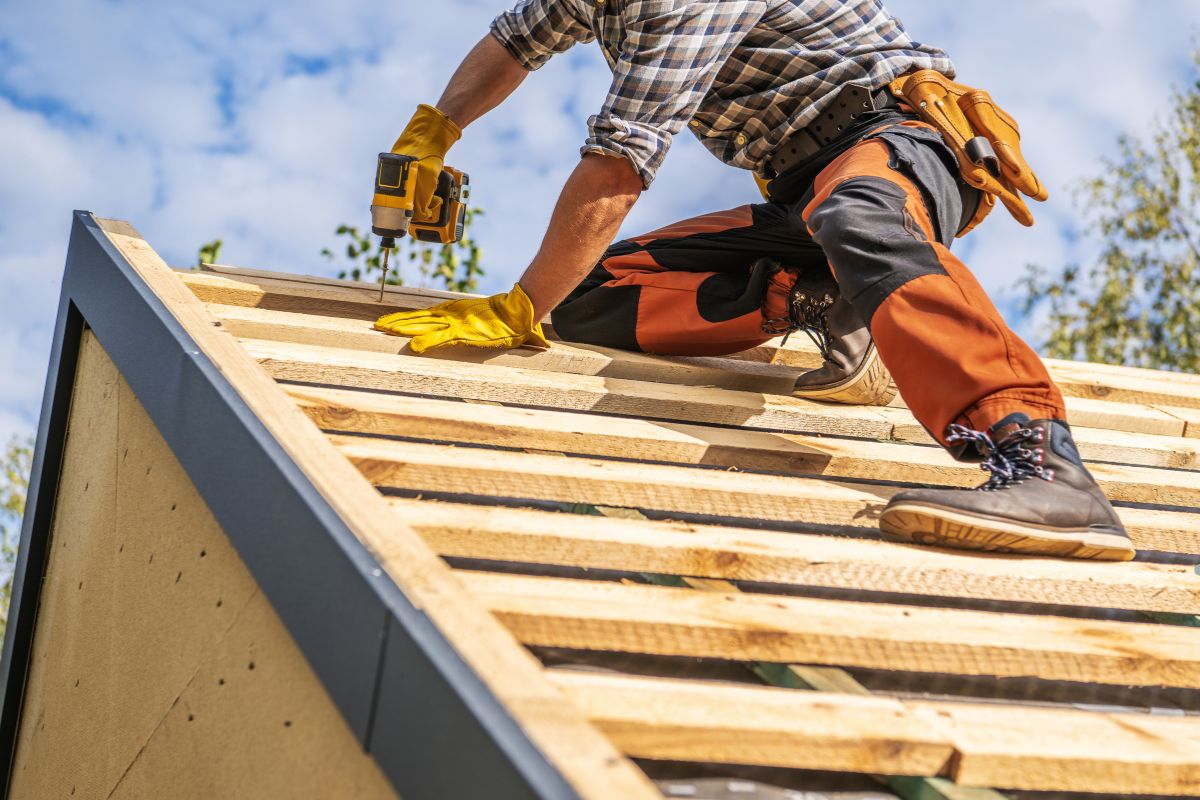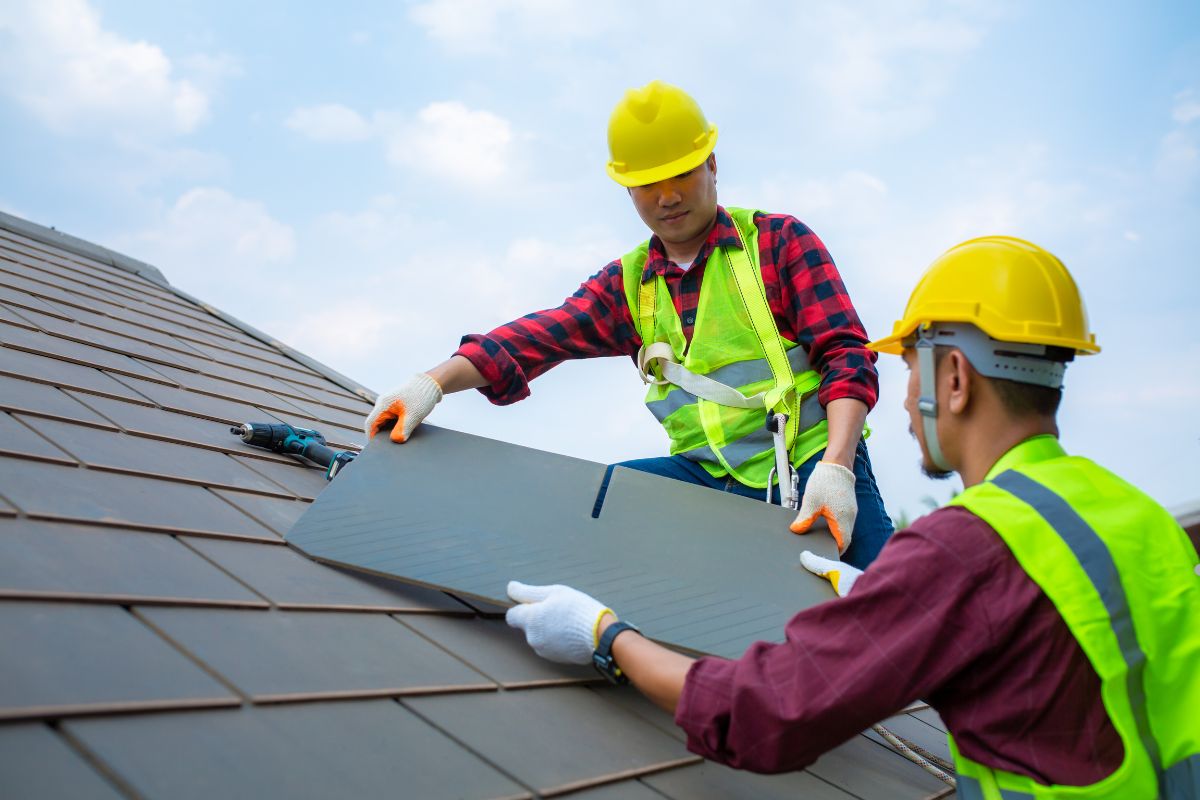
While Thermoplastic Polyolefin (TPO) roofing offers many benefits, including energy efficiency and cost-effectiveness, it’s essential to be aware of its potential downsides. This article explores the disadvantages of TPO roofing, including seam weakness, vulnerability to punctures, chemical sensitivity, and lifespan limitations, to help you make an informed decision for your commercial property.
TPO Roofing: A Brief Overview
TPO roofing has become a popular choice for commercial buildings across the United States. This single-ply membrane roofing system is known for its reflective properties, which help reduce energy costs by keeping buildings cooler in the summer. TPO is also relatively inexpensive compared to some other roofing options, making it an attractive choice for budget-conscious building owners. Its heat-welded seams create a watertight barrier, offering reliable protection against the elements.
The Disadvantages of TPO Roofing

While TPO roofing offers many benefits, it also comes with certain drawbacks. Recognizing these potential issues is essential before committing to your roofing system. Our roofing services can help you navigate these challenges and ensure the best solution for your needs.
Seam Weakness
One of the most significant concerns with TPO roofing is the potential for seam failure. While TPO seams are heat-welded together, they can weaken over time due to exposure to the elements, particularly UV radiation and temperature fluctuations. This weakening can lead to leaks, which can cause significant damage to the building’s interior.
Puncture and Tear Vulnerability
TPO is also susceptible to punctures and tears. While it’s more durable than some other single-ply membranes, it’s not as resistant to damage as materials like metal or modified bitumen. Foot traffic, hail, falling debris, or even sharp objects can puncture or tear the TPO membrane, compromising its integrity and leading to leaks.
Chemical Sensitivity
Certain chemicals and oils can degrade TPO over time. This is particularly important to consider for buildings that house industrial operations or are located near sources of chemical pollutants. Exposure to these substances can weaken the TPO membrane, making it more susceptible to damage and leaks. Regular TPO roof maintenance is essential to protect against chemical exposure and extend the lifespan of your roofing system.
Your roof is your home’s first line of defense against the elements, but exposure to harsh weather and aging can lead to leaks and damage. Regular maintenance is key to preventing costly repairs and extending its lifespan. Learn more in our blog Why Regular Roof Maintenance Matters.
Limited Lifespan Compared to Other Materials
While TPO roofing can last for 15-20 years with proper maintenance, its lifespan is generally shorter than that of other roofing materials like metal or built-up roofing. This means that building owners may need to replace their TPO roof sooner than they would with other options.
Installation Complexity
Proper installation is crucial for the performance and longevity of a TPO roof. However, TPO installation can be complex, requiring skilled and experienced roofing contractors. Improper installation can lead to a variety of problems, including seam failures, wrinkles, and blisters, which can significantly reduce the lifespan of the roof.
Color Limitations
TPO membranes come in a limited range of colors, mainly white, gray, and tan. White is the most popular choice for its reflective benefits, but the limited options may not suit building owners looking for a specific aesthetic. Call us today to explore your options!
TPO vs. Other Roofing Materials

When considering TPO roofing, it’s helpful to compare it to other common roofing materials like EPDM and PVC. EPDM (ethylene propylene diene monomer) is a synthetic rubber roofing material known for its durability and resistance to weathering. PVC (polyvinyl chloride) is another single-ply membrane roofing material that is known for its chemical resistance and long lifespan. While TPO offers a balance of cost-effectiveness and performance, EPDM and PVC may be better choices for buildings with specific needs or environmental conditions.
Cost Considerations
The initial cost of TPO roofing is generally lower than that of other roofing materials. However, the long-term cost can be higher if the roof requires frequent repairs or needs to be replaced sooner than expected. Building owners should carefully consider the potential for long-term costs when evaluating TPO roofing.
Maintenance and Repair
Regular maintenance is essential for maximizing the lifespan of a TPO roof. This includes inspecting the roof for damage, cleaning the surface to remove debris, and repairing any punctures or tears promptly. Proper maintenance can help prevent leaks and extend the life of the roof.
Is TPO Roofing Right for You?
Ultimately, the decision of whether or not to install a TPO roof depends on the specific needs and priorities of the building owner.TPO offers many benefits of roofing, it’s important to weigh the potential disadvantages carefully. Consider the building’s location, environmental conditions, budget, and aesthetic preferences before making a final decision.
FAQs
How long does TPO roofing typically last?
With proper maintenance, TPO roofing can last for 15-20 years.
Is TPO roofing resistant to punctures?
TPO is susceptible to punctures, so it’s important to protect the roof from sharp objects and heavy foot traffic.
Can TPO roofing be repaired?
Yes, TPO roofing can be repaired, but it’s important to address any damage promptly to prevent further problems.Call us to discuss the best roofing options for your building’s unique needs.
Conclusion
TPO roofing is a popular choice for commercial buildings due to its energy efficiency and cost-effectiveness. However, it’s important to be aware of the potential disadvantages, including seam weakness, puncture vulnerability, chemical sensitivity, and lifespan limitations. By understanding these drawbacks, building owners can make an informed decision about whether or not TPO roofing is the right choice for their property. Contact us to learn more.
